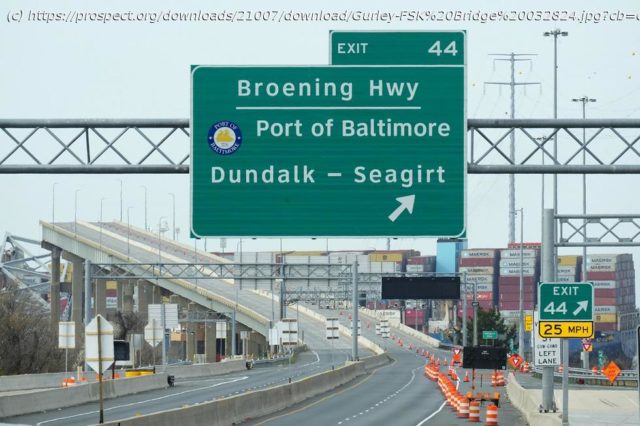For the moment, Maryland officials are focused on crisis management.
The Port of Baltimore was on a roll. In February, Maryland Gov. Wes Moore celebrated new record traffic at the vessel and terminal hub and installed a new executive director, Jonathan Daniels, at the Maryland Port Administration. The port already was an established leader in auto imports and exports, thanks to its closer proximity to the Midwest than other ports, and led the country in passenger vehicle shipping for 13 consecutive years.
The container ship crash and collapse of Baltimore’s Francis Scott Key Bridge pushed those milestones aside in seconds. Maryland faces a grim recovery mission for the men killed, and what promises to be one of the country’s most closely watched infrastructure projects at one of the East Coast’s busiest ports.
Like similar marine facilities, the Port of Baltimore plays an integral if ignored role in American life. Most people don’t spend much time thinking about ports unless a global pandemic strikes or vital transportation links tragically shut down. Now there’s an accident investigation, complex wreckage removal, including hazardous materials, cargo and vessel logistics, economic hits, and expectations to manage. “That has got to be the focus, getting our economic engine going and restoring a measure of pride to Baltimore and the state of Maryland, because this port is a huge point of pride that we have for our state,” Moore, a Democrat, told Fox 5, the metro Washington affiliate, Wednesday morning.
The Port of Baltimore, which houses state-owned and private marine terminals, falls into the category of small but mighty. Baltimore is the ninth-busiest port in the country for international cargo and the 17th-largest overall. In fiscal year 2023, the public terminals handled nearly 12 million tons of general cargo, setting a new record for the facility. The 52.3 million tons of international cargo the facility handled also set records. Though container cargo constitutes most of the activity through the port, it does not have the container traffic of New York/New Jersey or Norfolk, Virginia.
“It’s a short, sharp, localized shock,” says Chris Caplice, executive director of MIT’s Center for Transportation and Logistics. The national impact, he believes, will be “minimal.”
Where the loss of the port—closed indefinitely to vessel traffic—will be felt is as an import/ export port of entry for passenger vehicles, as well as construction and farm equipment. Forbes reported that automakers are already planning to use alternative locations like Brunswick, Georgia, the second-largest facility for cars and other vehicles, along with Newark and Jacksonville.






